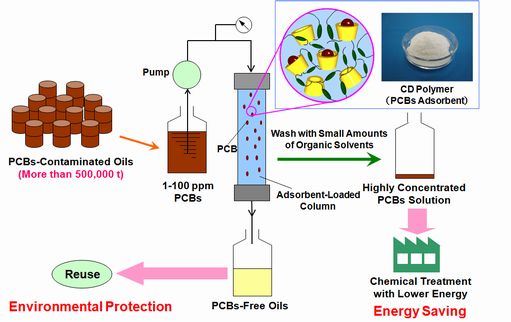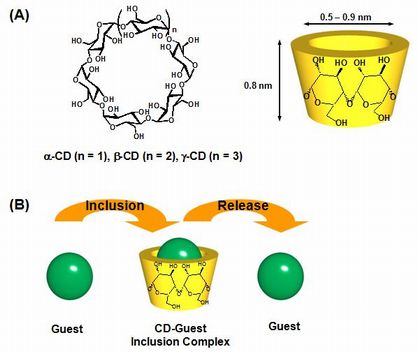Title
Graduate School of Engineering, Osaka University and Research Center for Environmental Preservation, Osaka University and NEOS Company Limited aim at early utilization of the technologies which carry out separation and concentration of PCB (polychlorinated biphenyl) from electrical oils polluted with low concentration PCB. For this reason, “NEOS (separation concentrate system) joint research course” was established on July 1, 2010.
A large amount of electrical oils polluted with PCB (persistent organic pollutants) are kept in various regions in japan now, while it has been untreated (it is estimated as not less than a total of 500,000 tons). There are problems that huge time and energy are needed only by present chemical treatment. Furthermore, we are anxious about disclosure of PCB to inside of the environment by degradation and corrosion of containers and natural disasters. For this reason, there is a need for the establishment of treatment technology which can abolish PCB polluted electrical oils immediately.
In collaboration with NEOS Company Limited, the professor of Mitsuru Akashi and the associate professor Toshiyuki Kida in Osaka University Graduate School of Engineering developed the cyclic oligosaccharide derivatives which can adsorb and remove PCB in electrical oils highly alternatively. Furthermore, it is made clear that PCB adsorbed by the cyclic oligosaccharide derivatives can be recovered by organic solvents and the cyclic oligosaccharide derivatives can also be reused. In this joint research course, the column is filled up with the cyclic oligosaccharide derivatives developed as PCB adsorbent and the PCB polluted electrical oils are passed in the column. The above systems (accompanying figure) are constructed and the testing machine which can separate and condense PCB in electrical oils is built. We aim at promoting early utilization of the testing machine by tackling intensively verification test for obtaining certification of the Ministry of Environment. By using the testing machine, PCB polluted electrical oils can be easily divided into detoxication electrical oils and a little PCB high concentrated solution, and detoxication electrical oils can be reused. On the other hand, Degradative treatment of a little PCB high concentrated solution can be carried out easily in the existing PCB disposing facility. For this reason, we think that we can contribute to abolition of a lot of PCB polluted oils in our country.

Fig. diagram of PCB separation and concentration system

Fig. Chemical structure of cyclodextrin(CD) and schematic diagram









